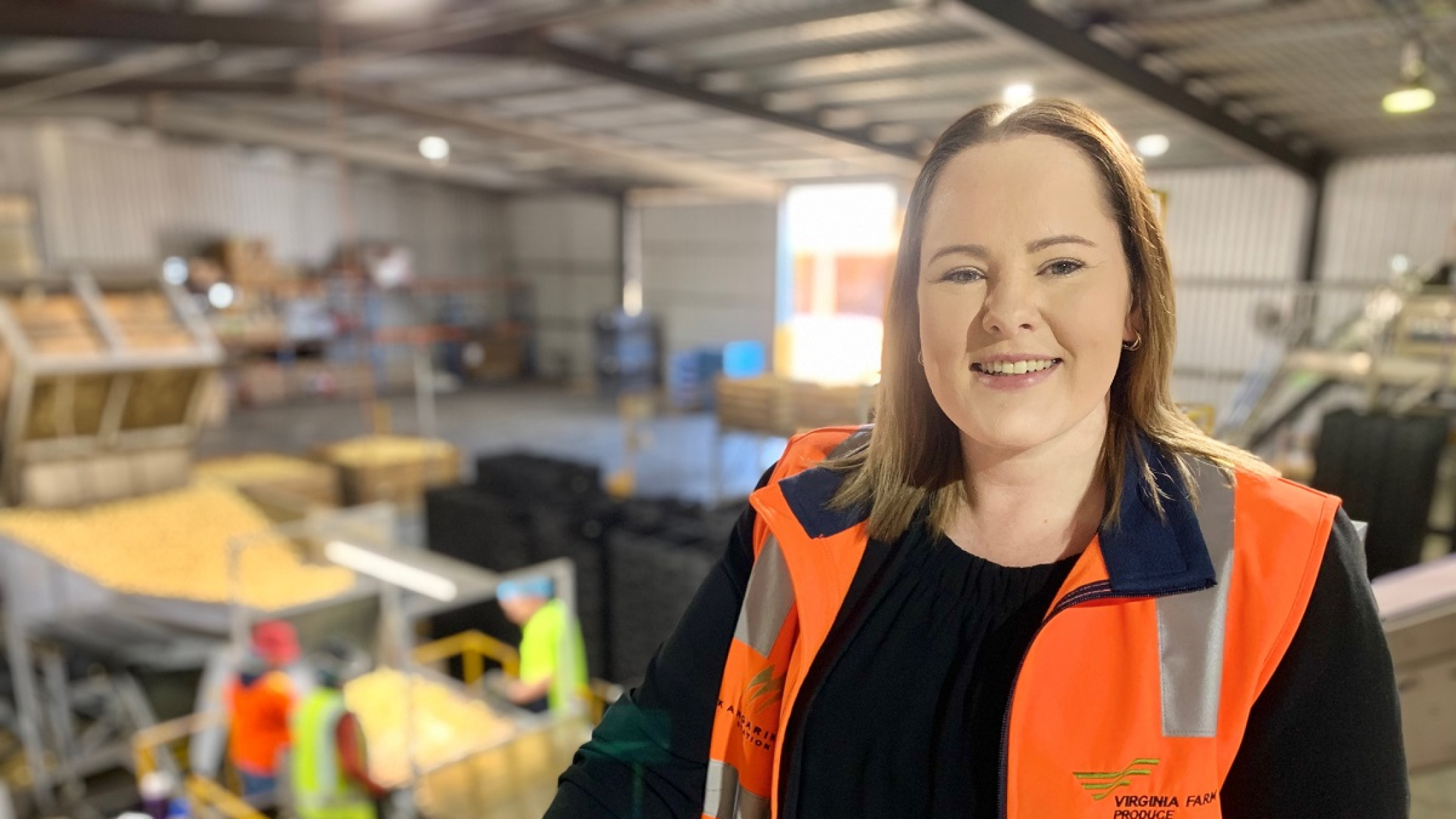The worker shortage crisis is forcing some farmers to move towards more automation, replacing seasonal employment opportunities in Australia long term.
Key points:
- Ausveg CEO James Whiteside says without international workers farmers will not be able to grow and harvest many of their crops
- Potatoes are the biggest vegetable commodity grown in Australia by volume with more than 1.3 million tonnes dug out of the ground each year
- Consumer demand for potatoes led to a 5 to 10 per cent increase in 2020
Potato farmers have welcomed the steep rise in demand for their produce since the start of the pandemic, but many are left with the impossible task of securing enough workers.
Virginia Farm Produce chief financial officer Jessica Snaddon said they saw a “huge uplift” in demand for their fresh potatoes, but “since the working holiday-maker pool dried up” due to the pandemic, sourcing labour was their biggest struggle.
“We are advertising through every medium, we are interviewing 10 to 20 people every week. We can recruit them but one of the biggest struggles that we have is retaining the staff past the first couple of shifts,” Ms Snaddon said.
Where Virginia Farm Produce usually would employ hundreds of working holiday-makers throughout the year, they were now restructuring their operation and cutting down on employing people.
“We are looking at keeping our core staff that we have but we have got an opportunity to make up a gap in the business where we did have working holiday-makers to move towards a more automated system.”
‘International workers are key’
The CEO of the national peak body for vegetable and potato industries Ausveg, James Whiteside, said the impact of the lack of seasonal workers across the entire agriculture sector was enormous.
“It has had a huge impact on potato growers. A lot of the potatoes are harvested mechanically but certainly in packing sheds and grading sheds across the country the fact that we don’t have seasonal workers in the country has put a lot of pressure on farmers,” Mr Whiteside said.
Mr Whiteside said securing international workers was crucial and they were working closely with federal and state governments to bring more seasonal workers into Australia.
“Really the key is trying to find ways in which we can get international workers in because, whether we like it or not, the fact is that so many of these jobs we just simply can’t get Australians to do them,” he said.
Growers welcome consumer demand
A resurgence in home cooking since the pandemic has made the humble potato a highly sought after product in Australian households, much to the delight of farmers.
Potatoes are the biggest vegetable commodity grown in Australia by volume at more than 1.3 million tonnes per year.
Mr Whiteside said they saw an increase of 5 to 10 per cent across the industry last year — a promising sign, as fresh potato consumption had seen a decline over the past 20 years.
The demand has been good news for the Pye family who farms potatoes in South Australia’s Murray Mallee and recorded a steady increase throughout 2020.
She believed people went looking for affordable and comfort foods that were versatile in the kitchen, when the pandemic hit.
Nevertheless, Ms Pye said securing enough labour had also been difficult for their operation, making them look outside the box.
“We are looking for those students who are sitting in their rooms and maybe looking for work or people who we usually don’t look for as well,” she said.
“We are happy to have anyone on board who is willing to work out on the farm or in the packing shed.”




